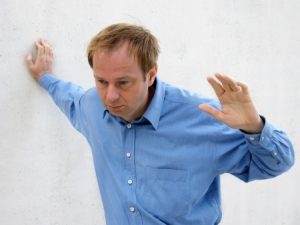Portage WI Hip Replacement Rehabilitation – A Patient Testimonial
July 22, 2016Recovering From Surgery at Maplewood Sauk Prairie
September 5, 2016You get up from your chair and you feel the dizziness set in. You wake up in the morning, raise your head off of your pillow, and feel like your spinning. You turn your head quickly and you feel the imbalance in your body.
 Most of us take our balance for granted. As long as our balance is good, we don’t even think about it. But, the moment that we feel a little ‘off’; when we have some dizzy spells, our balance becomes a front and center issue.
Most of us take our balance for granted. As long as our balance is good, we don’t even think about it. But, the moment that we feel a little ‘off’; when we have some dizzy spells, our balance becomes a front and center issue.
Balance of the Body
Each and every one of us has mechanisms in our bodies that control our balance. These various functions in our body must all work together to allow us to have proper balance as we walk, turn, move and function in our daily lives.
The Cerebellum
The cerebellum is a portion of your brain (in the back of your head) that helps to control your balance functions.
The Eyes
The eyes are a big part of your balance as they give feedback to the brain as to your position, experienced visually.
Your Proprioception
Each of us have ‘proprioceptors’ all over our bodies in our muscles and joints. These receptors give feedback to our brains and tell us all of the positions of our body parts (even when our eyes are closed).
The Inner Ear
Deep within your ear are canals that help us with our balance. The fluid and small ‘crystals’ that move within these canals provide feedback to our brain as to the position of our head.
These are some of the main balance mechanisms within our bodies. It is important to understand that any problems that occur with any of these processes, can cause you to become dizzy or lose your balance.
What is Vertigo?
One specific type of dizziness is called vertigo.
Vertigo is episodes of dizziness and a feeling of spinning with certain head movements. Vertigo is caused by an inner ear disturbance. It can be often, but not always, cause by a virus.
Causes of Vertigo
Benign Positional Vertigo (BPV)
BPV occurs when tiny calcium particles (canaliths) move within canals of the inner ear. This movement of the calcium particles in the inner ear can send abnormal signals to the brain, causing the vertigo.
BPV can occur for no known reason and may be associated with age.
Meniere’s Disease
This is an inner ear disturbance that is thought to be caused by a buildup of fluid and changing pressure in the ear. It can cause episodes of vertigo along with ringing within the ears (tinnitus) and loss of hearing.
Labyrinthitis
This is an inner ear problem usually related to infection (usually viral). The infection causes inflammation in the inner ear around nerves that are important for helping the body sense balance
Other cause of vertigo include migraine headaches, brain or neck injuries and certain medications.
Symptoms of Vertigo
Those individuals who experience vertigo often complain of symptoms including:
- unbalanced feeling
- spinning
- swaying to one side
- jerky eye movements
- ringing in the ears
Treatment for Vertigo
There are a variety of treatments for vertigo, depending upon the cause.
One of the common treatments for vertigo and dizziness is a type of physical therapy call vestibular rehabilitation. This is specific treatment for those who are suffering from inner ear disturbances and aims to strengthen the vestibular system.
Another treatment that is often used is a repositioning technique that helps to reposition the calcium particles within the inner ears. This repositioning can resolve the specific vertigo issues.
Should you require physical therapy or treatment for dizziness disorders, feel free to contact us at 608-643-3383.

